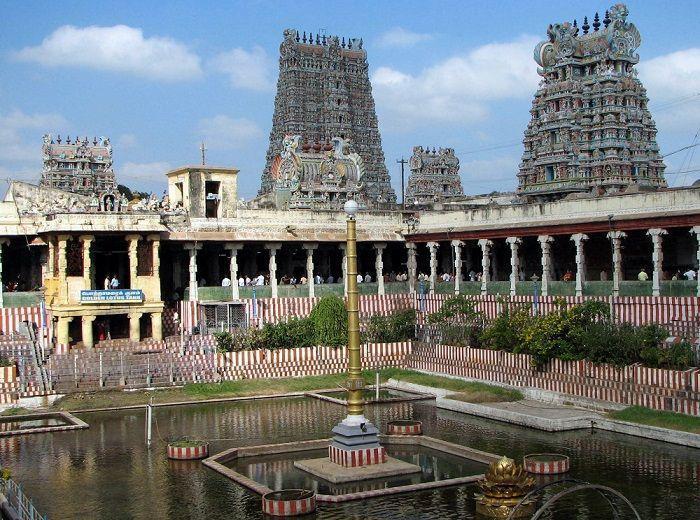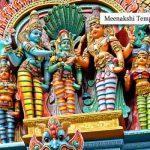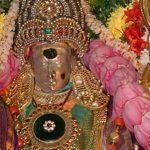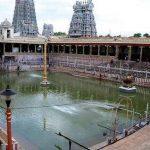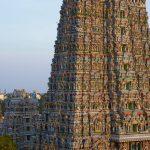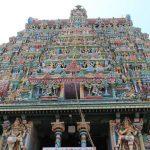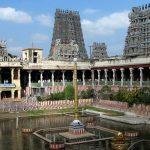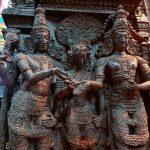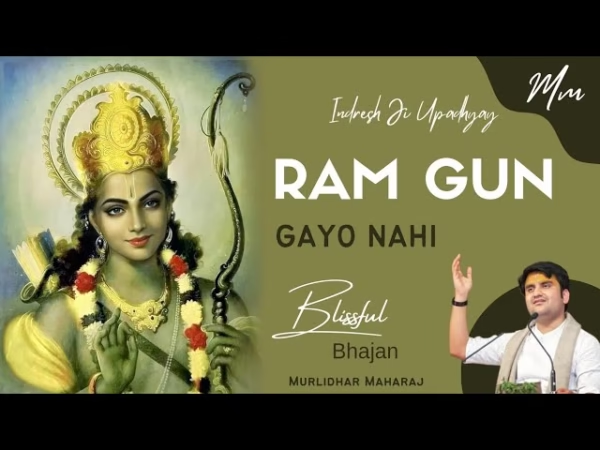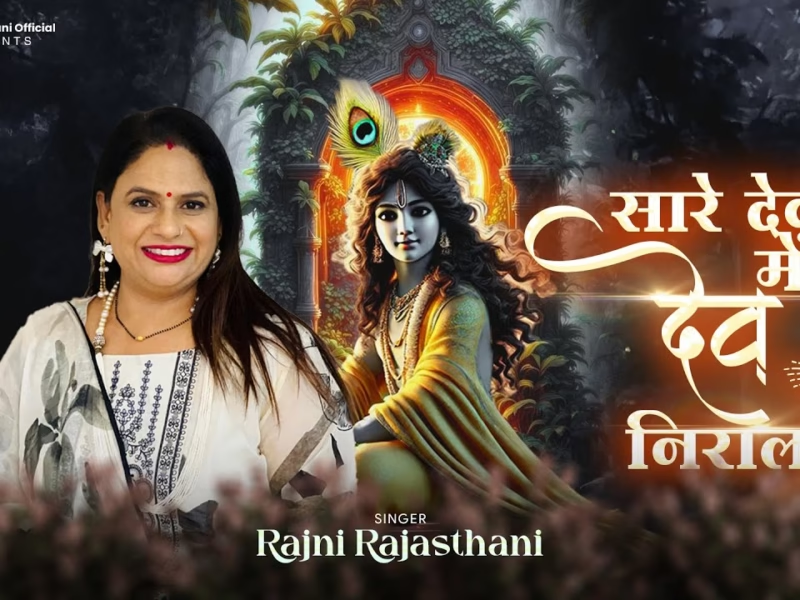Meenakshi Temple, Madurai, Tamil Nadu
| Date built: | – |
|---|---|
| Deity: | Meenakshi (Goddess Parvati) and Sundareswarar (Lord Shiva) |
| Architectural style: | Dravidian architecture |
| Major festivals | Tirukalyanam, Chithirai Thiruvizha |
| Locale: | – |
| District:: | Madurai |
| Address: | Madurai Main, Madurai, Tamil Nadu 625001 |
| Phone | – |
Meenakshi Amman Temple, also known as Minakshi-Sundareshwara Temple, is one of the oldest and most important temples in India. Located in the city of Madurai, the temple has a great mythological and historical significance. It is believed that Lord Shiva assumed the form of Sundareswarar (the handsome one) and married Parvati (Meenakshi) at the site where the temple is currently located. Renowned for its astonishing architecture, Meenakshi Temple was nominated as one of the wonders of the world, but couldn’t make it into the list of ‘Seven Wonders of the World’. However, the temple is definitely one of the ‘Wonders of India’. It is also one of the main attractions of South India with thousands of devotees thronging it every day. During the ‘Tirukalyanam Festival,’ which takes place over a period of 10 days, the temple attracts more than a million devotees. Despite many people visiting it every day, the temple is well-maintained and was named the ‘Best Swachh Iconic Place’ (cleanest iconic place) in India.
Architecture
The history of Meenakshi Temple dates back to the 1st century C.E with scholars claiming it to be as old as the city itself. It is said that Kulashekarar Pandyan, a king who ruled over the Pandyan dynasty, built the temple as per the instructions given in his dream by Lord Shiva. A few religious texts that belong to the 1st to 4th century C.E talk about the temple and describe it as the central structure of the city. Texts dating back to the early 6th century, describe the temple as a place where scholars met to discuss important topics. The temple as it stands today, however, was rebuilt throughout the 16th century as it was destroyed by the Muslim invaders.
During the 14th century C.E, Malik Kafur, a commander of Delhi Sultanate, led his army into most parts of southern India and looted many temples including the famed Meenakshi Temple. Valuables, such as gold, silver and precious gems were taken to Delhi. Since temples in those days had abundance of valuables, most of the temples were destroyed and were left in ruins. When the Vijayanagar Empire took over Madurai after defeating the Muslim Sultanate, the temple was rebuilt and reopened. The temple was further expanded during the late 16th century and early 17th century by Vishwanatha Nayakar, a king of the Nayaka dynasty. According to researchers, while rebuilding the temple, the rulers of Nayaka dynasty followed the architectural style of ‘Silpa Shastras.’ ‘Silpa Shastras’ are a set of architectural laws found in the ancient texts.
Legend / Local stories
Meenakshi Temple, also referred to as Meenakshi Amman or Minakshi-Sundareshwara Temple,is a historic Hindu temple located on the southern bank of the Vaigai River in the temple city of Madurai, Tamil Nadu, India. It is dedicated to Meenakshi, a form of Parvati, and her consort, Sundareshwar, a form of Shiva. The temple is at the center of the ancient temple city of Madurai mentioned in the Tamil Sangam literature, with the goddess temple mentioned in 6th century CE texts.
Though the temple has historic roots, most of the present campus structure was rebuilt after the 14th century CE, further repaired, renovated and expanded in the 17th century by Thirumalai Nayak.In the early 14th century, the armies of Delhi Sultanate led by Muslim Commander Malik Kafur plundered the temple, looted it of its valuables and destroyed the Madurai temple town along with many other temple towns of South India. The contemporary temple is the result of rebuilding efforts started by the Vijayanagara Empire rulers who rebuilt the core and reopened the temple. In the 16th century, the temple complex was further expanded and fortified by the Nayak ruler Vishwanatha Nayakar and later others. The restored complex now houses 14 gopurams(gateway towers), ranging from 45–50m in height, with the southern gopura tallest at 51.9 metres (170 ft). The complex has numerous sculpted pillared halls such as Ayirakkal (1,000 pillar hall), Kilikoondu-mandapam, Golu-mandapam and Pudu-mandapam. Its shrines are dedicated to Hindu deities and Shaivism scholars, with the vimanas above the garbhagrihas (sanctums) of Meenakshi and Sundaresvara gilded with gold.
The temple is a major pilgrimage destination within the Shaivism tradition, dedicated to Meenakshi Devi and Shiva. However, the temple includes Vishnu in many narratives, sculptures and rituals as he is considered to be Meenakshi’s brother. This has made this temple and Madurai as the “southern Mathura”,one included in Vaishnava texts.The Meenakshi temple also includes Lakshmi, flute playing Krishna, Rukmini, Brahma, Saraswati, other Vedic and Puranic deities, as well as artwork showing narratives from major Hindu texts. The large temple complex is the most prominent landmark in Madurai and attracts tens of thousands visitors a day.The temple attracts over a million pilgrims and visitors during the annual 10-day Meenakshi Tirukalyanam festival, celebrated with much festivities and a ratha (chariot) procession during the Tamil month of Chittirai (overlaps with April–May in Georgian calendar, Chaitra in North India).The Temple has been adjudged best ‘Swachh Iconic Place’ in India as on October 1, 2017 under Prime Minister of India Narendra Modi’s Flagship Swachh Bharat Abhiyan.
Photo Gallery
How to Reach:
Contact Details
Official Address

